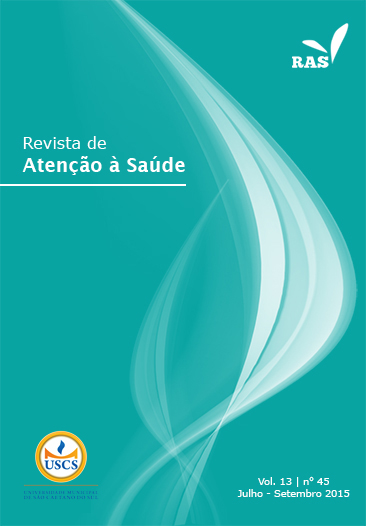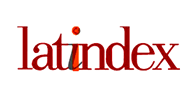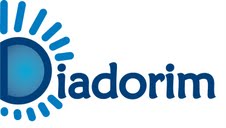PHYSICAL INACTIVITY IN CHILDREN: A SYSTEMATIC REVIEW OF STUDIES CONDUCTED IN BRAZIL
DOI:
https://doi.org/10.13037/ras.vol13n45.2873Keywords:
Physical activity, childhood, peer review, Brazilian.Abstract
Introduction: The urbanization process, technological advances, economic, political and social changesinfluence the physical activity levels in persons, and the physical inactivity can promote risks to health inall ages. Objective: The purpose of this study was to describe the prevalence of physical inactivity amongBrazilian children, by a systematic review. Materials and Methods: A systematic review of articles publishedin Bireme database was carried out. The search was conducted between August and September of 2013and used the combination of terms: “physical activity”; “motor activity”; “exercise”; “physical inactivity”;“sedentary”; “energy expenditure”; “physical fitness”; “risk factor”; “sports”; “factor”; “health behavior”;“lifestyle”; “health”; “physical education”; “child”; “school”; “childhood”; “youth”; “child health”; “Brazil”and “Brazilian”. Only the articles published from 2004 to 2013 were included. Results: The initial searchresulted in 58 articles. Three were classified as repeated, and in the end, eight manuscripts were selectedfor review, and two were obtained from the list of references. A variation in the prevalence of physicalinactivity was from 14.2% to 73.9%. The cross-sectional design was prevalent among the studies. Of all ofpublications, three were from the southeast region. The questionnaire was the main instrument to measurethe level of physical activity in children. Conclusions: The prevalence of physical inactivity in studies withBrazilian children was high. However, it’s necessary to carry out more studies in different regions.Downloads
References
1. Oehlschlaeger MHK, et al. Prevalência e fatores associados ao sedentarismo em adolescentes de área urbana. Rev de
Saúde Púb. 2004;38(2):157-63.
2. Strong WB, et al. Evidence based physical activity for school-age youth. The Journal of Pediatrics. 2005;146(6):732-7.
3. Tassitano RM, et al. Atividade física em adolescentes brasileiros: uma revisão sistemática. Rev Bras de Cineantropometria e Desempenho Humano. 2007;9(1):55-60.
4. Molina MCB, et al. Fatores de risco cardiovascular em crianças de 7 a 10 anos de área urbana, Vitória, Espírito Santo, Brasil. Cader de Saúde Púb. 2010;26(5):909-17.
5. Costa FF, Assis MAA. Nível de atividade física e comportamentos sedentários de escolares de sete a dez anos de Florianópolis-SC. Rev Bras de Atividade Física e Saúde. 2011;16(1):48-54.
6. Schimidt MI, et al. Chronic non-communicable diseases in Brazil: burden and current challenges. Lancet. 2011;377(9781):1949-61.
7. Hallal PC, et al. Evolução da pesquisa epidemiológica em atividade física no Brasil: revisão sistemática. Rev de Saúde Púb. 2007;41(3):453-60.
8. Dumith SC, et al. Atividade física no Brasil: uma revisão sistemática. Cader de Saúde Púb. 2009;25(3):415-26.
9. Sousa TF. Inatividade física em universitários brasileiros: uma revisão sistemática. Rev Bras de Ciências da Saúde. 2011;9(29):47-55.
10. United States Department of Health and Human Services (USDHHS). Physical Activity Guidelines for Americans. Washington, 2008 [acesso em 17 set 2015]. Disponível em: http://www.health.gov/paguidelines/pdf/paguide.pdf
11. Giugliano R, Carneiro EC. Fatores associados à obesidade em escolares. Jornal de Pediatria. 2004;80(1):17-22.
12. Assis MAA, et al. Overweight and thinness in 7-9 year old children from Florianópolis, Southern Brazil: a comparison with a French study using a similar protocol. Rev de Nutrição. 2006;19(3):299-308
13. Baruki SBS, et al. Associação entre estado nutricional e atividade física em escolares da Rede Municipal de Ensino em Corumbá-MS. Rev Bras de Medicina do Esporte. 2006;12(2):90-4.
14. Gama SR, Carvalho MS, Chaves CRMM. Prevalência em crianças de fatores de risco para as doenças cardiovasculares. Cader de Saúde Púb. 2007;23(9):2239-45.
15. Siqueira PP, Alves JGB, Figueiroa JN. Fatores associados ao excesso de peso em crianças de uma favela do nordeste brasileiro. Rev Paulista Pediatria. 2009;27(3):251-7.
16. Gama SR, et al. Cohort study for monitoring cardiovascular risk factors in children using a primary health care service: methods and initial results. Cader de Saúde Púb. 2011;27(3):510-20.
17. Mazaro IAR, et al. Obesidade e fatores de risco cardiovascular em estudantes de Sorocaba, SP. Rev da Associação Medica Bras. 2011;57(6):674-80.
18. Hallal PC, et al. Global physical activity levels: surveillance progress, pitfalls, and prospects. Lancet. 2012;380(9838):247-57.
19. Bastos JLD, Duquia RP. Um dos delineamentos mais empregados em epidemiologia: estudo transversal. Scien Médica. 2007;17(4):229-32.
20. Coordenação de Aperfeiçoamento de Pessoal de Nível Superior (CAPES) [acesso em 17 set 2015]. Disponível em: http://www.capes.gov.br/
21. Barros MVG, Nahas MV. Medidas da atividade física. Londrina, PR: Midiograf; 2003.
Downloads
Published
Issue
Section
License
Copyright (c) 2015 Camilo Lourenço Monteiro, Thiago Ferreira de Sousa, Daiane Aragão

This work is licensed under a Creative Commons Attribution-NonCommercial-NoDerivatives 4.0 International License.
Policy Proposal for Journals offering Free Delayed Access
Authors who publish in this magazine agree to the following terms:
- Authors maintain the copyright and grant the journal the right to the first publication, with the work simultaneously licensed under a Creative Commons Attribution License after publication, allowing the sharing of the work with recognition of the authorship of the work and initial publication in this journal.
- Authors are authorized to assume additional contracts separately, for non-exclusive distribution of the version of the work published in this magazine (eg, publishing in institutional repository or as a book chapter), with the acknowledgment of the authorship and initial publication in this journal.
- Authors are allowed and encouraged to publish and distribute their work online (eg in institutional repositories or on their personal page) at any point before or during the editorial process, as this can generate productive changes, as well as increase impact and citation of the published work (See The Effect of Open Access).









